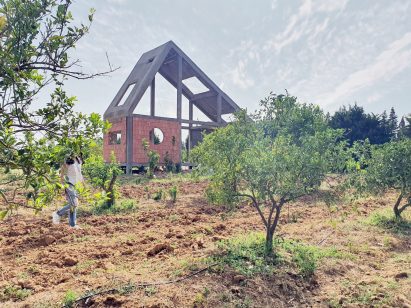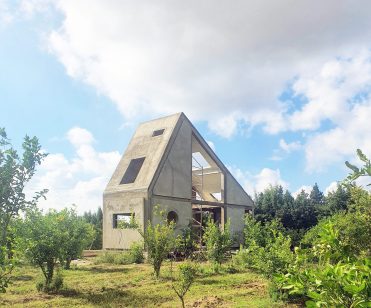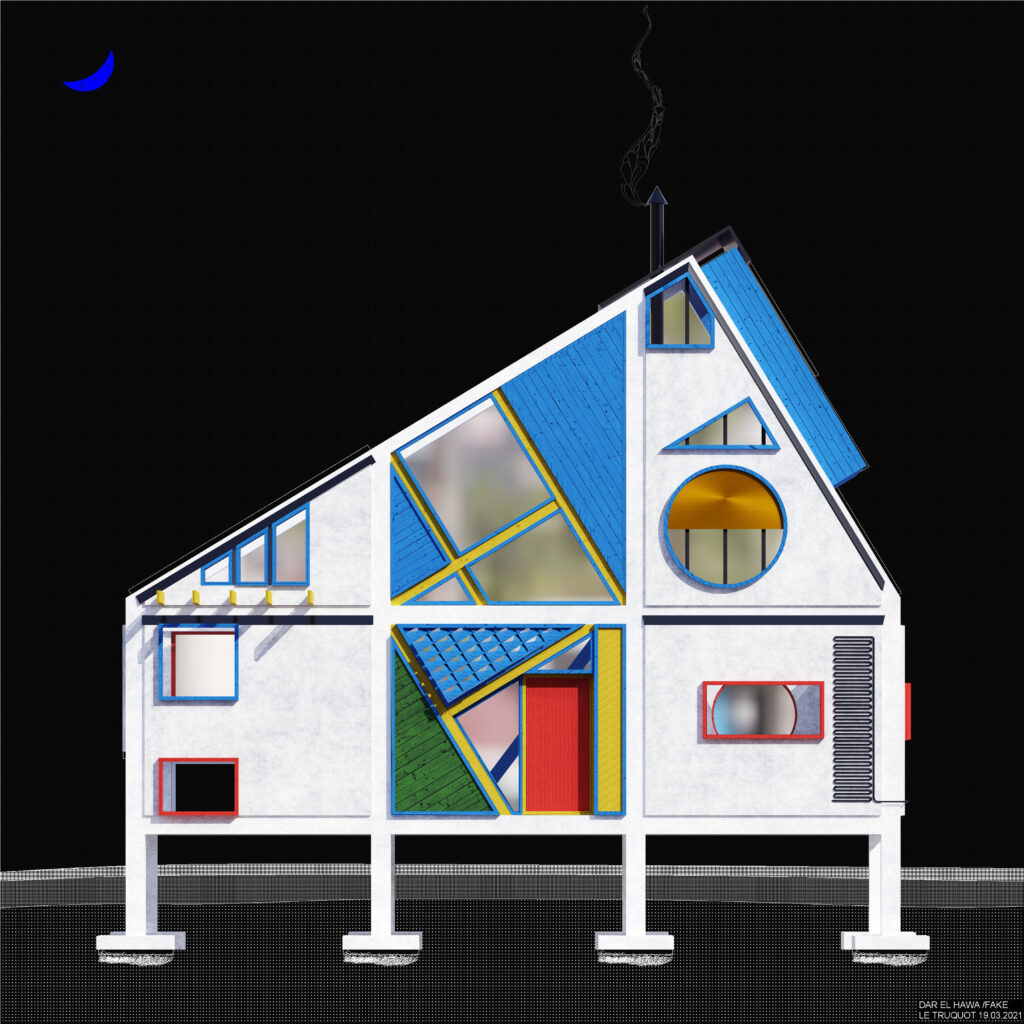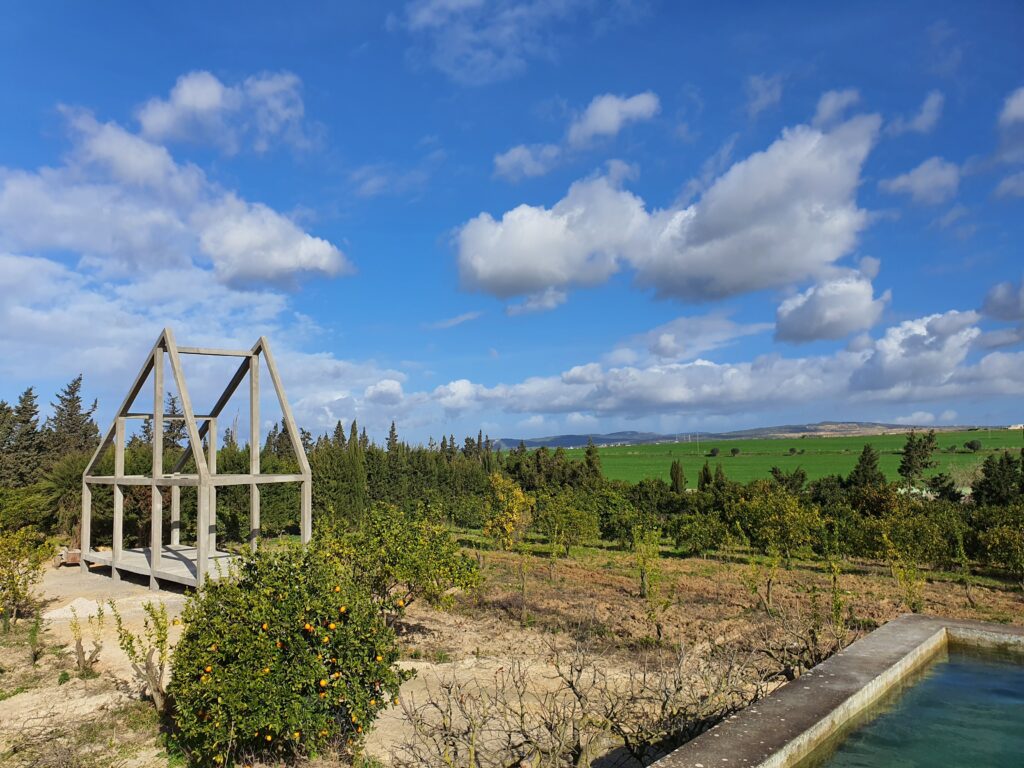

Dar el Hawa » is @le_truquot ‘s first real size house.
HAWA in arabic is a very rich word that has different meanings as it is transcribed in latin letters. it can be:
- -the name of EVE (as in adam and eve)
- -The AIR
- -Passionate love
Program: a renting for wedding ceremonies.
Dar Hawa uses a specific archetype to propulse the human mind into a primitive yet modern way of living and appriciating the surrounding nature.
The house is elevated by 60 cms by 8 reinforced concrete pillars. (25x25cm)
the façades uses the conventional holed clay bricks in a new way: merging a light wall with a natural ventilation system.
Based on modernist rules and applied to a rural Tunisian architecture, Dar Hawa tries to reinvent construction techniques using the same cheap, unperfect construction materials. We aim to improve living standards without increasing the overall costs or lowering the living spaces with pushing the living habits vertically.
Messy programs like cooking, working and washing are pushed down into a cleaned tiled interior. Living programs are pushed up into a spiritual space melting smooth wood and raw concrete slabs.
This « tiny » house works as a toolbox. containing everything needed for working on a farm in the most rationalised spaces.
No machine whatsoever has been involved in its building. It is situated near Beni Khalled, Tunisia
total Area: 100m2
It is still under construction




